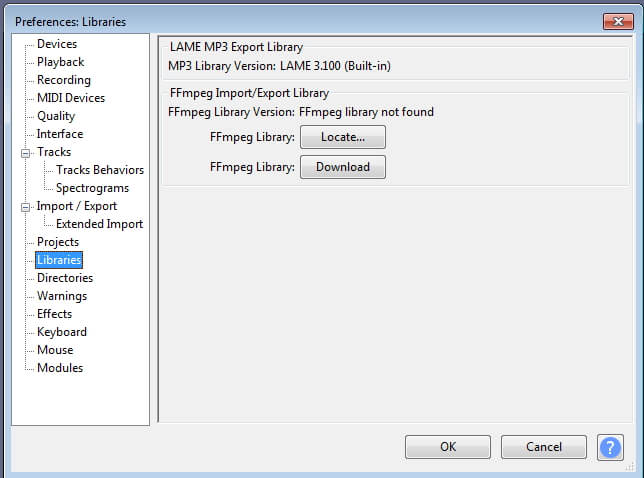
Start /wait audacity-win-2.1.3.exe /VERYSILENT /SUPPRESSMSGBOXES /NORESTART /SP- /MERGETASKS="!desktopicon" /L*v "c:\install\logs\audacity-win-2.1.3.log" If not exist C:\install\logs\ md C:\install\logs\ Create cmd file for Audacity unattended installation.Ĭreate a text file to the folder created previously.Note! Download the last version of Audacity offline installer.Ĭopy the exe to a the folder named like “ Audacity offline installer” Download Audacity offline installer directly to application webpage: Instead of downloading the setup on every PC, you can download it one time and then install it everywhere. You would want the offline installer of Audacity. Installing other component for AudacityĪttention! Silent install guides for other application here: Complete List.Might as well just use FFMPEG by itself w/ windows 10 default recording app. Note that you cannot use FFmpeg to import files this way - it's just export. If you want to use the 3.2.2 ffmpeg.exe, the only way to do that is to choose the command-line "(external program)" when you export and include "F:\ffmpeg-3.2.2\bin\ffmpeg.exe" as the first part of the command. You can use a slightly later FFmpeg 2.2.3 but it has to be a "shared" build that includes separate dylib files.

To load FFmpeg via Preferences, you have to install FFmpeg 2.2.2 according to. You can't choose ffmpeg.exe in Audacity's Libraries Preferences. (Yes, hidden folder is on by default and drive is completely indexed) Can I just select the ffmpeg.exe? What my question is "how does one tell audacity the FFmpeg folder (version 3.2.2) is on drive F:\ffmpeg-3.2.2\bin" ? Also what is this dylib? I have an ffmpeg.exe, but no weird things like that. FFmpeg is actually installed on another drive entirely. CrazyMate wrote:I installed FFmpeg, long before even looking at audacity.


 0 kommentar(er)
0 kommentar(er)
